Model Lost Entire Lips in Pitbull Attack, And She Reflects on Her Recovering Journey

Alright. You’re scuba diving in the ocean, watching corals and colorful fish flitting by, when suddenly an enormous shadow appears above you. You look up and see a massive creature approaching you, its mouth a gaping abyss... Relax, just stay still and you’ll be fine.
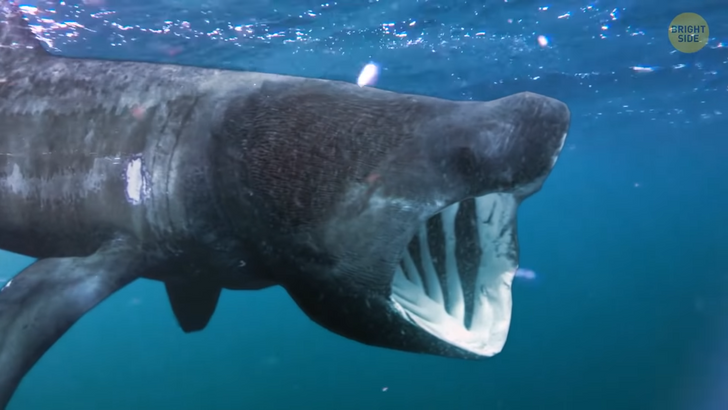
This leviathan is a basking shark — one of the scary sea monsters that isn’t really capable of doing harm to anyone. Basking sharks are filter feeders, just like baleen whales: they open their large mouths to swallow plankton, and don’t even have teeth.
It’s late night in the Central American jungle, you’re out in the wild to watch birds, and you hear flapping of wings. Excited, you look intently into your night vision goggles... only to see a face out of your worst nightmares. Don’t scream, you’ll scare it away!
It’s a perfectly harmless wrinkle-faced bat, and it isn’t interested in you. These are fruit bats, and wrinkles on their faces allow them to collect fruit pieces and juice for later snacks. By the way, their Latin name, Centurio senex, was given to them for their resemblance to 100-year-old humans.
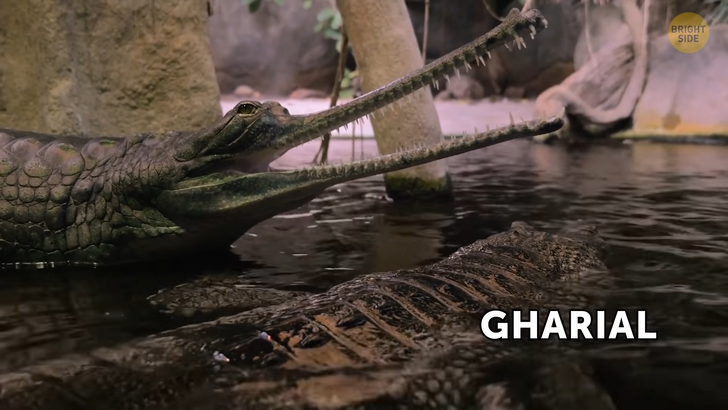
Walking around a Nepali national park and deciding to wash your face in the river nearby, you freeze in terror: a crocodile is looking straight at you from no more than a few feet’s distance. Then it raises its snout above the water, and you exhale in relief: it’s a gharial.
These reptiles have long and narrow snouts that allow them to efficiently catch fish and at the same time prohibiting them from hunting any other prey. While still carnivores, gharials are pretty shy and will slither away at the sight of humans. Right now, there are no more than a thousand of these crocodilians in the whole world, so let it go. Especially if it’s a girl gharial. Ha.
You dig your garden in the backyard and notice something moving on your shovel. You take a closer look and drop the tool in horror. A small creature looking like a hostile alien is scurrying away into some burrow in the ground. No worries, it’s just a star-nosed mole.
These critters have peculiar snouts that look like they’ve been blown up from within. Their eyes are small and weak, so the star on their nose helps them a lot to move around and seek food. It’s always on the move, touching everything it can reach as if the tendrils were tiny fingers.
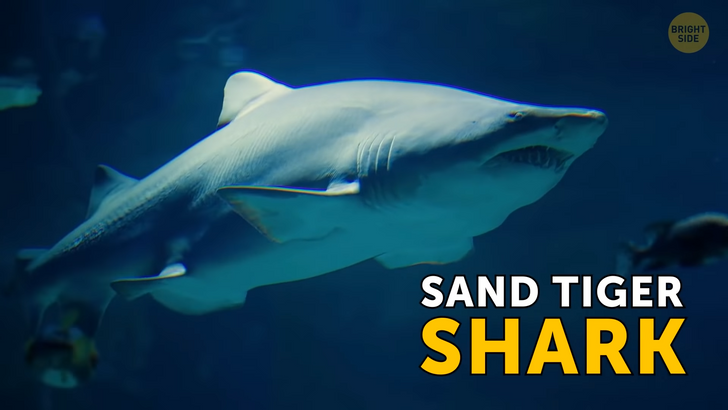
Oh, you’re bathing in the ocean again? Well, look to your right — there’s a real toothed shark going right at you! Nah, don’t panic, it’s just a sand tiger shark. Neither a sand nor a tiger one, it’s a vulnerable fish-eating shark that slowly swims in the seas and chases its prey from time to time.
There have been no reports of it ever attacking humans, but it still has rows of sharp teeth, so don’t try to touch it just in case. It might seem placid, but you don’t want it to get a bite out of you, do you?
Okay, from ocean to desert — you’re in Australia and longing for some water. You see a likely spot and start digging the ground, only to stumble upon a creature straight from the depths of the nether, all covered in thorns. It eyes you suspiciously and slinks away because it’s just a thorny devil.
Despite its ominous name, this lizard is harmless to humans: horn-like bumps on its skin are for protection from predators and birds of prey. The thorns are hard but as long as you don’t touch them, you’re fine.
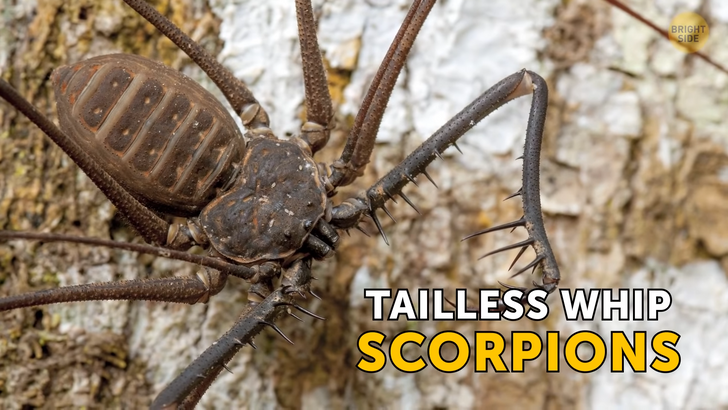
Now, if you have arachnophobia, it won’t calm you down, but tailless whip scorpions you might meet in North and South America, as well as Asia and Africa, are more afraid of you than you are of them. (Tell yourself that.) These nightmarish creatures don’t have stingers and won’t even bite when threatened.
The worst they could do — and only if you corner them, why would you do that? — is pricking you with their front legs, leaving tiny puncture marks on your finger. Many people even keep them as pets, and they’re quite affectionate towards their owners. Yeah...
If you ever stumble upon a burrow from which a hairless, big-toothed creature is peeking at you, just don’t mind it and let it be. Naked mole-rats are the Sphynx cats among rodents. They’re close relatives of mole-rats but, well, naked.
And they’re fascinating in their own right too: thanks to living entirely underground, they’re almost totally cold-blooded but can conform to any temperature outside. And their flappy wrinkled skin doesn’t feel any pain at all, so pins and prickles, as well as sharp teeth, don’t scare naked mole-rats.
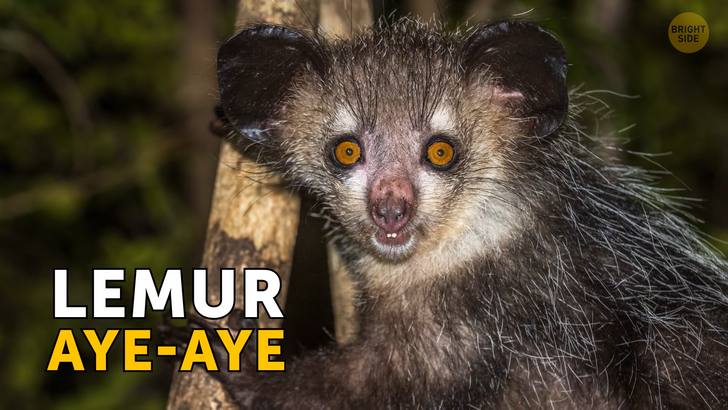
You’re once again lost in the jungle, this time on Madagascar. Poor you. The night has fallen, and you seek shelter, but when you think you’ve found a suitable tree to build a lean-to, you freeze in terror. A black, long-fingered hand appears on a tree’s branch right above you and two huge yellow eyes are staring you down.
Then, you see a shaggy face and realize it’s just a lemur — an aye-aye, more precisely. This creature is native to Madagascar and only goes out at night, so you’re lucky to see it! It fulfills a role of a woodpecker in tropical forests: it knocks on tree trunks to find bugs and uses its long wizened fingers to reach inside.
Tired of being scared, you seek your way home, but your horrors aren’t over yet: there’s a big red and white snake across your path. It hisses and lies in wait for you to move. You know it’s a coral snake — a really dangerous venomous kind.
You stop in your tracks and only when it finally slithers away, you realize it was actually a milk snake. They often mimic venomous ones (not only coral snakes) to protect themselves from predators. Still, if you’re not a snake expert, it’s always best to stay away.
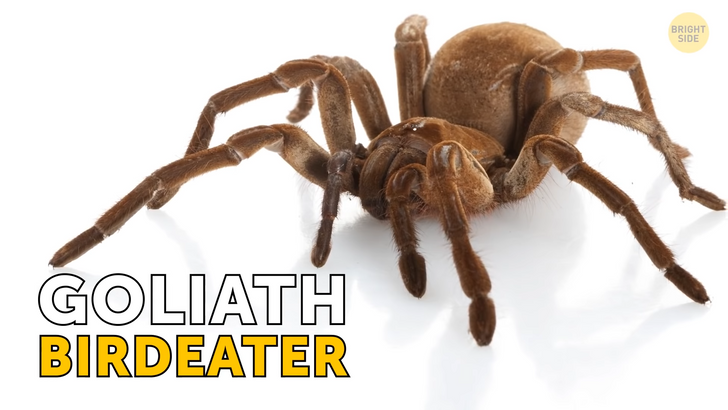
Okay, this creature will infest your darkest dreams: a giant African millipede. It’s big, it’s glossy black, and it has hundreds of tiny, crawly legs. And yet if it had googly eyes, it could be even cute — perhaps that’s why so many people keep them as pets.
That, and because they commonly live up to 10 years. Giant millipedes can’t really bite; their only defense is curling into a tight ball and secreting irritating liquid from the pores in its skin. If you dare touch it, don’t rub your eyes or nose afterwards, it’s quite unpleasant.
Goliath birdeater is another popular pet creepy crawler. It isn’t dangerous for humans despite it looking like your worst nightmare. This is one of the largest spiders in the world, and as its name implies, it sometimes hunts small birds for food. But they aren’t part of its regular diet: the spider prefers worms and amphibians.
Make sure you don’t frighten it, though: it can still bite or release hairs in self-defense. The bite is similar to a wasp sting, and hairs can cause severe irritation on the skin. But mostly this gentle giant is just shy and will crawl away at the sight of you.
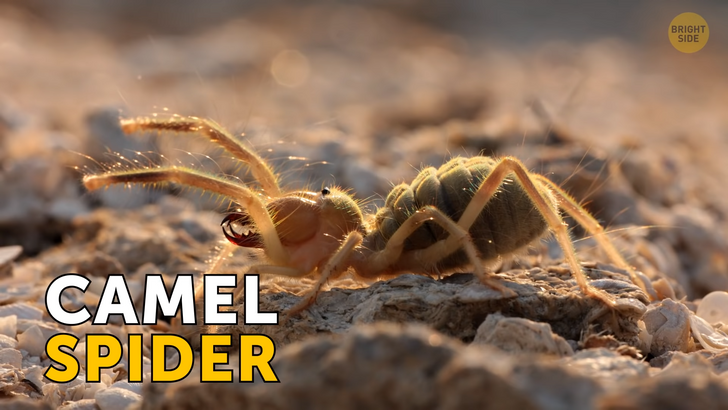
Oh dear, there’s another snake approaching you, and fast... You’re about to turn and run when you see a hulking eight-legged form cutting into the snake’s path and leaping on it. It’s another arachnid, and it looks even more terrifying than the snake — it’s a camel spider. Not really a spider nor a scorpion, these creatures belong to a separate family.
They became the stuff of many urban legends, but in fact, they don’t even have any venom. Sure, they can bite, and their jaws are pretty powerful, but camel spiders can’t do much more to a human than just bite. They hide in the sand and burrows to leap on unsuspecting lizards, invertebrates, and yes, even snakes.
And now, picture a pill bug. Not exactly a beauty, but since it’s small, it’s okay. But what if it were ten times as large? No, definitely not okay. Still, such a creature exists, and it’s a giant isopod. Thankfully, it lurks in deep, dark, and cold waters, so it won’t ever come up in your backyard. Giant isopods grow to such enormous size because of something called deep-sea gigantism.
Deep-dwelling creatures have to endure great pressure of water, extreme cold temperatures, and scarce food, so their metabolism slows down. Isopods don’t move much and more often than not just lie in wait until some small bug or crustacean crawls within their reach, and they could munch on it. And though it looks like a many-legged chaos from below, a giant isopod can’t hurt you even if it wanted to. Just pet it already.











